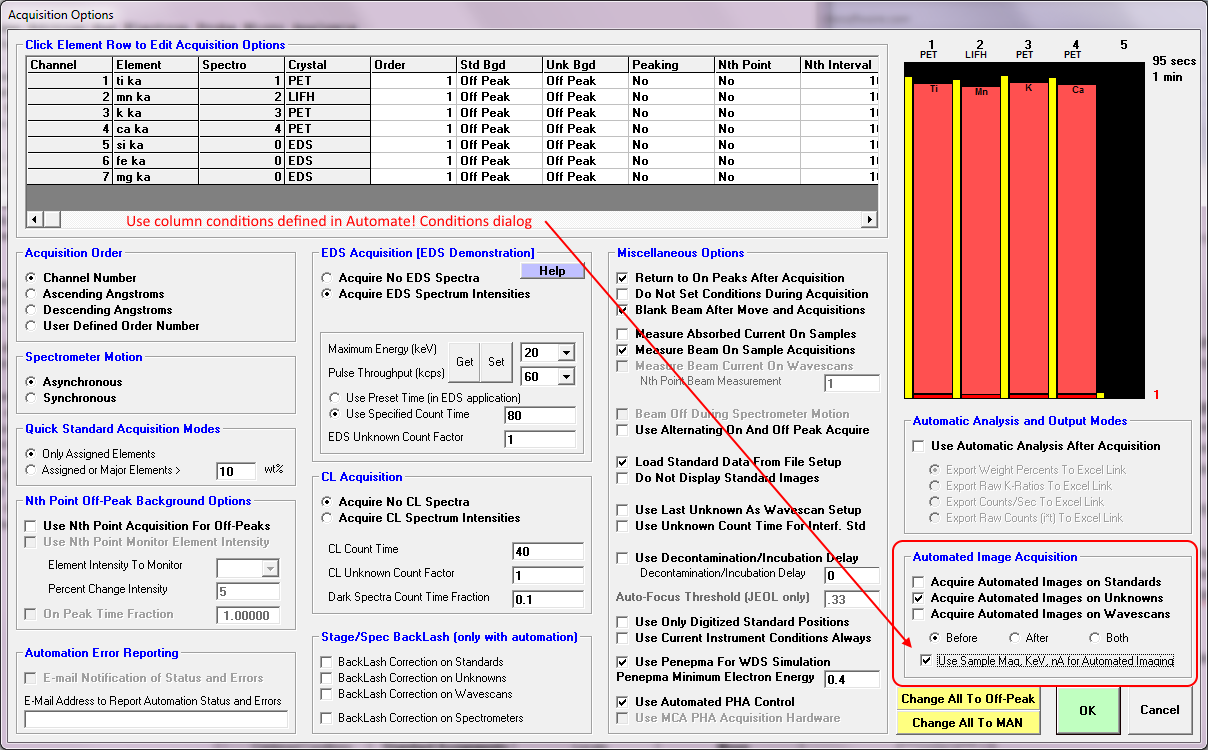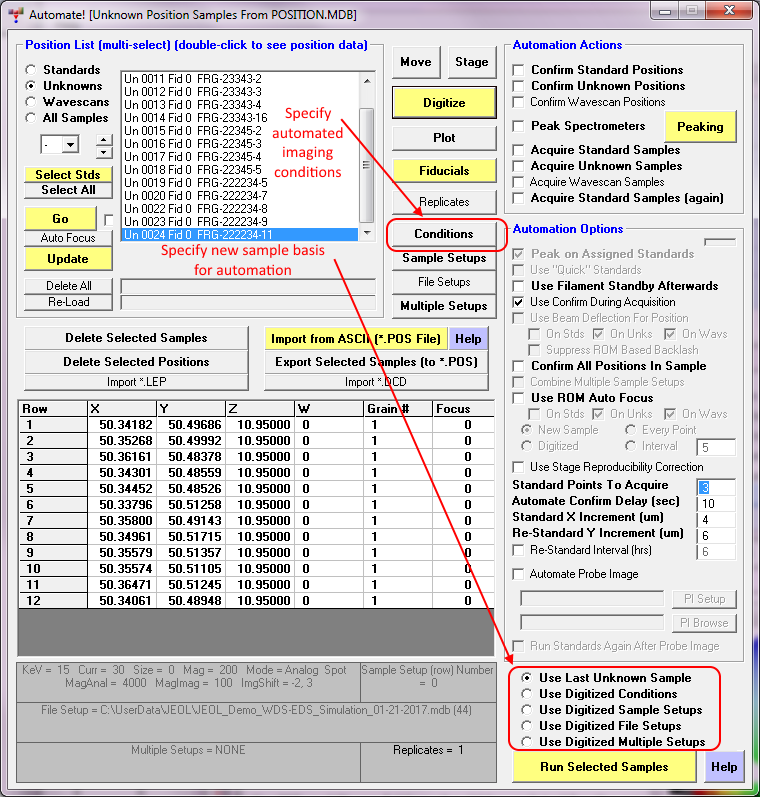This is a feature that has existed for a while but I've fleshed it out a bit after Karsten Goemann suggested some changes, and it works quite well now. Basically one can acquire analog signal images along with the automated sample acquisition from the Automate! window in Probe for EPMA, either before the sample acquisition, after the sample acquisition, or acquire images before *and* after the sample acquisition.
The recent changes allow one to specify different column conditions for the automated image acquisition than the conditions utilized for the sample acquisition. Currently the imaging magnification, keV and beam current can be specified independently for analog signal acquisition with automated sample acquisition.
The first step is to "turn on" automated imaging acquisiiton from the Acquisition Options dialog from the Acquire! window as seen here:

Note that the Use Sample Mag, keV and nA for Automated Imaging checkbox is checked. If you hover the mouse over the checkbox you will see that the "sample" it is speaking of is the *position* sample conditions as specified in the Automate! window as seen here:

Next you simply specify the desired imaging conditions (mag, keV and/or nA) and assign those to the position sample.
Finally, and this is the critical step, you should change the "new sample basis" in the lower right corner of the Automate! window to utilize the sample conditions or setups that you want for the actual sample x-ray acquisitions. That might be "Use Last Unknown Sample" or "Use Digitized Sample Setups" but unless you want the analog images acquired using the same column conditions as a sample acquisition, you should change it to another new sample basis.
As I mentioned already, right now only the imaging magnification (not the default magnification!), kilovolts and beam current parameters affect automated imaging acquisition, but I could add other column conditions as well if necessary.
Let me know what you all think...
john